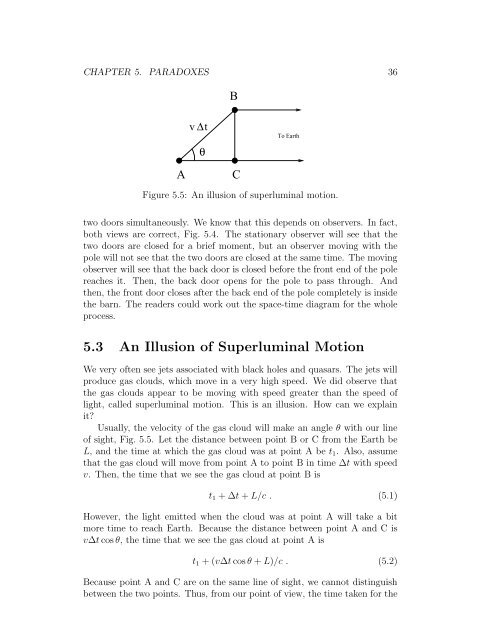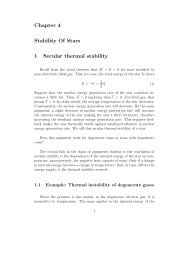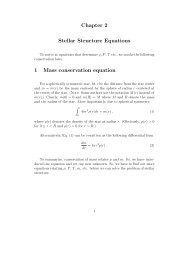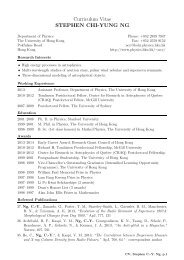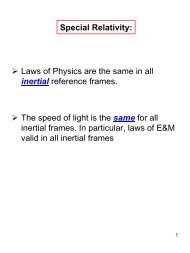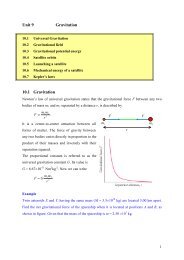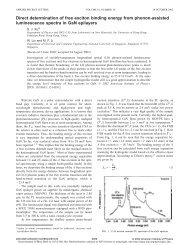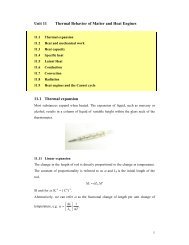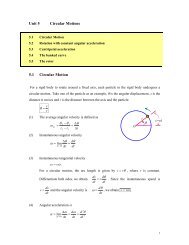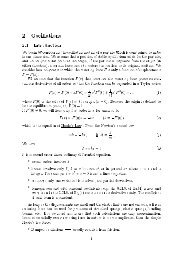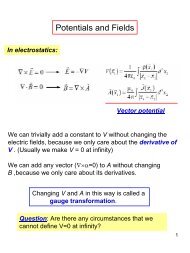here - Department of Physics, HKU
here - Department of Physics, HKU
here - Department of Physics, HKU
You also want an ePaper? Increase the reach of your titles
YUMPU automatically turns print PDFs into web optimized ePapers that Google loves.
CHAPTER 5. PARADOXES 36<br />
B<br />
v ∆t<br />
θ<br />
To Earth<br />
A<br />
C<br />
Figure 5.5: An illusion <strong>of</strong> superluminal motion.<br />
two doors simultaneously. We know that this depends on observers. In fact,<br />
both views are correct, Fig. 5.4. The stationary observer will see that the<br />
two doors are closed for a brief moment, but an observer moving with the<br />
pole will not see that the two doors are closed at the same time. The moving<br />
observer will see that the back door is closed before the front end <strong>of</strong> the pole<br />
reaches it. Then, the back door opens for the pole to pass through. And<br />
then, the front door closes after the back end <strong>of</strong> the pole completely is inside<br />
the barn. The readers could work out the space-time diagram for the whole<br />
process.<br />
5.3 An Illusion <strong>of</strong> Superluminal Motion<br />
We very <strong>of</strong>ten see jets associated with black holes and quasars. The jets will<br />
produce gas clouds, which move in a very high speed. We did observe that<br />
the gas clouds appear to be moving with speed greater than the speed <strong>of</strong><br />
light, called superluminal motion. This is an illusion. How can we explain<br />
it?<br />
Usually, the velocity <strong>of</strong> the gas cloud will make an angle θ with our line<br />
<strong>of</strong> sight, Fig. 5.5. Let the distance between point B or C from the Earth be<br />
L, and the time at which the gas cloud was at point A be t 1 . Also, assume<br />
that the gas cloud will move from point A to point B in time ∆t with speed<br />
v. Then, the time that we see the gas cloud at point B is<br />
t 1 + ∆t + L/c . (5.1)<br />
However, the light emitted when the cloud was at point A will take a bit<br />
more time to reach Earth. Because the distance between point A and C is<br />
v∆t cosθ, the time that we see the gas cloud at point A is<br />
t 1 + (v∆t cosθ + L)/c . (5.2)<br />
Because point A and C are on the same line <strong>of</strong> sight, we cannot distinguish<br />
between the two points. Thus, from our point <strong>of</strong> view, the time taken for the


